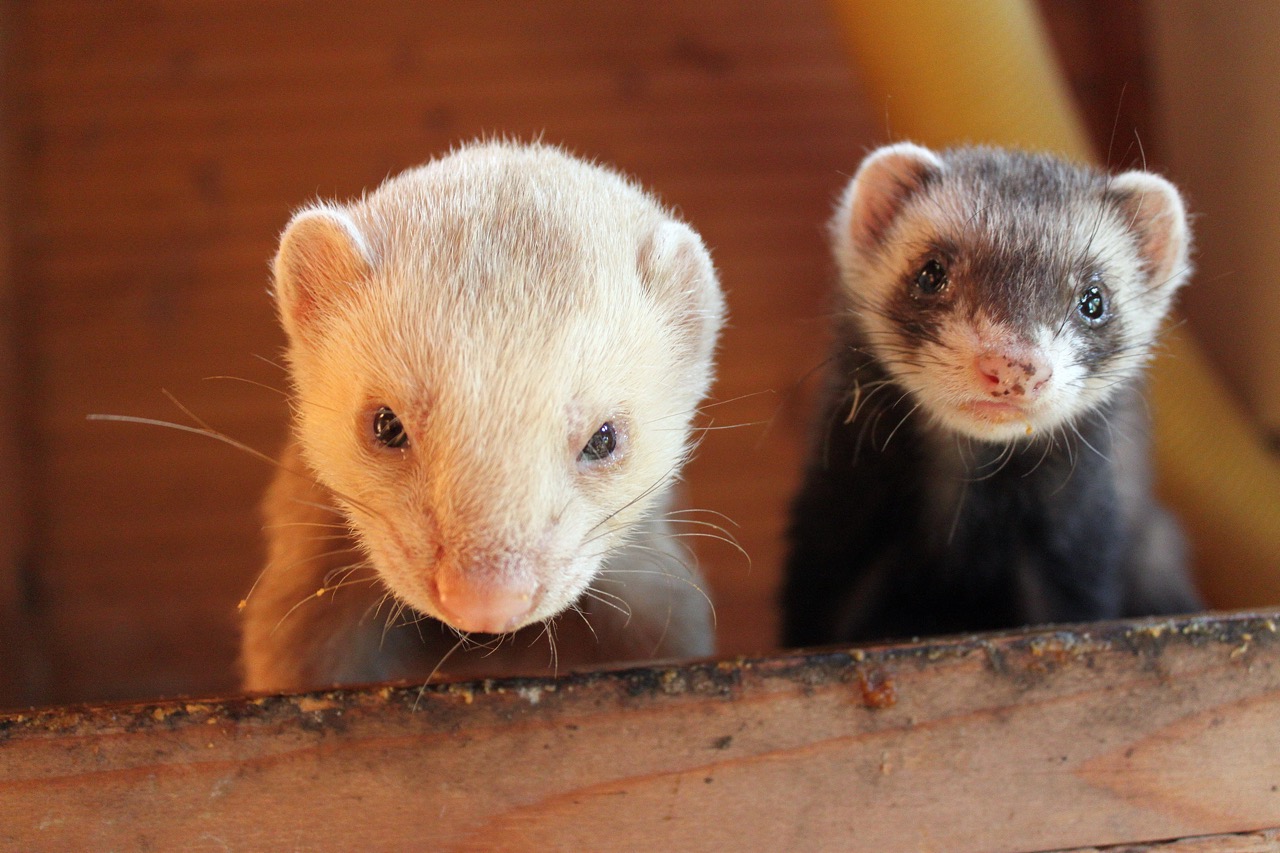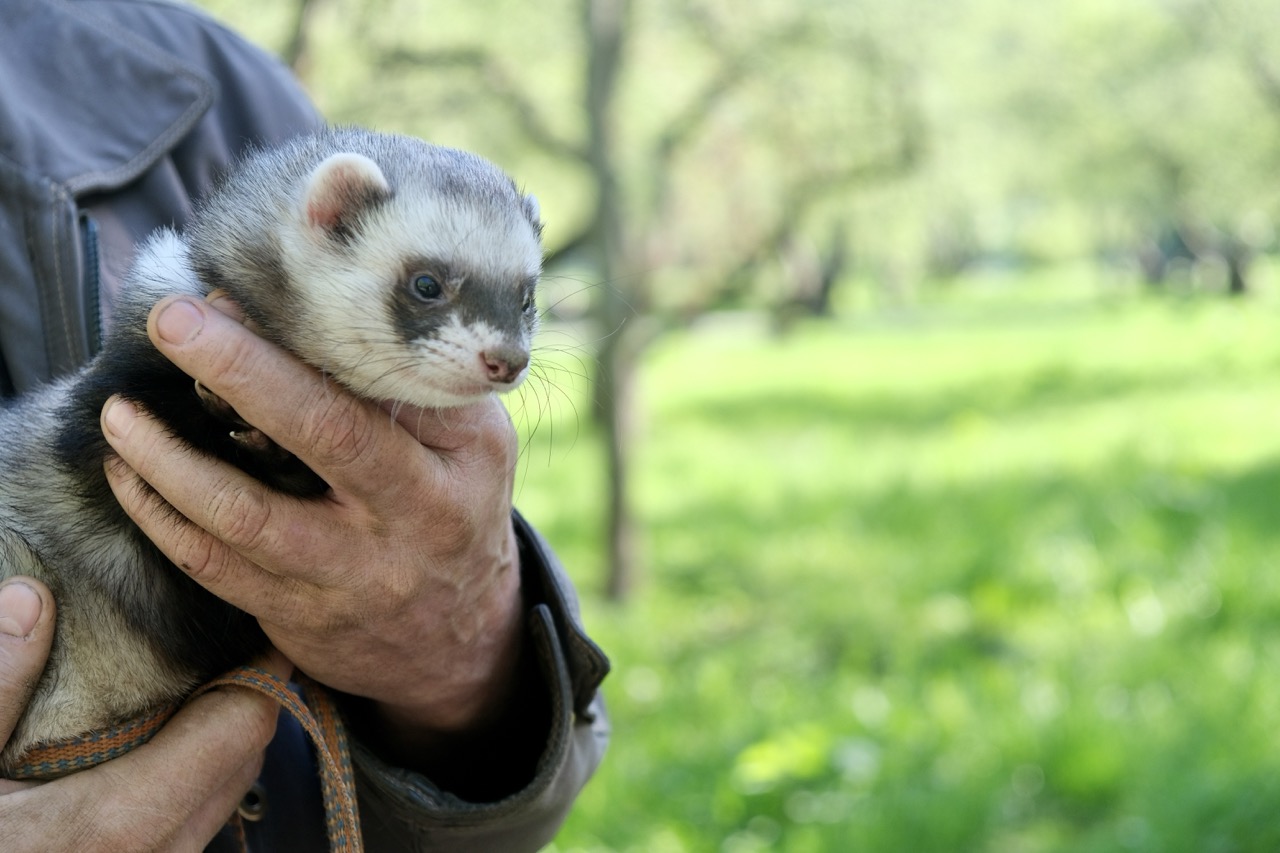The ferret (Mustela putorius furo) is a small, domesticated member of the weasel family, known for its playful demeanor and agile body. Understanding the ferret’s nervous system and how it processes stimuli is crucial for appreciating its behavior and ensuring its well-being. This article delves into the structure of the ferret’s nervous system, how it responds to various environmental stimuli, and the implications of these reactions for their overall behavior.
Understanding the Basics of the Ferret Nervous System
The ferret’s nervous system is a complex network that includes the central nervous system (CNS), which comprises the brain and spinal cord, and the peripheral nervous system (PNS), consisting of nerves extending throughout the body. This system is responsible for processing sensory information, coordinating movement, and facilitating communication between different body parts. The ferret’s nervous system allows it to react swiftly to changes in its environment, which is vital for its survival and social interactions.
Ferrets possess a well-developed cerebral cortex, which is involved in higher-order functions such as learning, memory, and decision-making. This cortical development suggests that ferrets are capable of complex behaviors and social interactions, making them more than just instinct-driven creatures. Additionally, the brainstem and cerebellum play essential roles in regulating autonomic functions and coordinating motor skills, respectively, allowing ferrets to execute quick and agile movements.
The interplay between the CNS and PNS enables ferrets to process sensory data from their environment almost instantaneously. This processing is crucial for their survival; ferrets must be able to detect potential threats, locate food, and communicate with other ferrets. Understanding this system provides insights into how ferrets perceive their world and respond to various stimuli, setting the foundation for exploring their responses to environmental factors.
Key Components: Brain Structure and Function in Ferrets
The brain of a ferret is structurally analogous to that of other mammals, but its unique adaptations allow for specialized functions. The ferret’s forebrain is responsible for sophisticated behaviors, including problem-solving and social interactions. The limbic system, a part of the forebrain, is particularly significant in regulating emotions, which plays a crucial role in their social behavior and bonding with humans and other ferrets.
Another critical component is the ferret’s olfactory bulb, which is significantly developed compared to other regions of the brain. This enhancement allows ferrets to have an acute sense of smell, vital for their hunting instincts and social communication. The sense of smell plays a pivotal role in how ferrets perceive their environment and interact with other ferrets, as they rely heavily on scent to gather information about their surroundings.
Moreover, the cerebellum, responsible for motor coordination, supports the ferret’s agility and playful nature. Ferrets are known for their energetic movements, and the coordination provided by the cerebellum enables them to perform acrobatic feats with ease. This physical agility, supported by a well-structured nervous system, enhances their ability to navigate complex environments, avoid dangers, and engage in play, which is essential for their development and socialization.
Ferret Responses to Environmental Stimuli Explained
Ferrets exhibit a range of behavioral responses to environmental stimuli, which can be classified into instinctual reactions and learned behaviors. Instinctual reactions are often immediate and reflexive, such as freezing when they sense danger or instinctively exploring new surroundings. These responses are primarily mediated by the brain’s limbic system, which processes emotional reactions quickly, enabling ferrets to react promptly to threats or changes in their environment.
In addition to reflexive responses, ferrets also show learned behaviors resulting from their interactions with the environment. For example, a ferret may learn to associate specific sounds, such as the opening of a food container, with feeding time. This learned response involves the cerebral cortex, where memories are formed and stored, showcasing the brain’s ability to adapt based on experience. These learned behaviors enhance the ferret’s ability to thrive in a dynamic environment, allowing them to develop strategies for hunting and socializing.
Sensory modalities play a significant role in how ferrets respond to stimuli. Their acute sense of hearing allows them to detect high-frequency sounds, while their keen sense of smell aids in identifying food and social cues. Vision, although not as developed as their olfactory and auditory senses, also contributes to their perception of the environment. The integration of these sensory inputs enables ferrets to make informed decisions about their actions, enhancing their adaptability and survival skills.
Implications of Sensory Reactions for Ferret Behavior
The sensory reactions of ferrets have profound implications for their behavior, influencing everything from playfulness to social interactions. For instance, their acute sense of smell drives their curiosity, prompting them to explore new environments. This exploration is not merely instinctual; it is also a form of play that is vital for their physical and mental development. Engaging in play helps ferrets practice hunting skills and build social bonds with other ferrets, which is essential for their well-being.
Moreover, the social behavior of ferrets is heavily influenced by their sensory reactions. When ferrets interact with each other, they use a combination of scents and sounds to communicate. These interactions can manifest as playful behaviors, such as chasing and wrestling, which are essential for establishing social hierarchies and strengthening bonds within groups. The ability to interpret these sensory cues accurately promotes social cohesion and reduces stress among ferrets.
Finally, understanding these sensory reactions can help ferret owners create enriching environments that cater to their pets’ natural instincts. Providing toys that stimulate their senses, setting up safe spaces for exploration, and facilitating social interactions can enhance the life quality of ferrets. Recognizing the importance of sensory input in ferrets’ lives allows owners to foster an environment that promotes healthy behaviors and emotional well-being.
In summary, the ferret’s nervous system is intricately designed to process and respond to environmental stimuli effectively. From the structural components of their brain to the implications of their sensory reactions, ferrets exhibit a range of behaviors shaped by their interactions with the world around them. By understanding these dynamics, ferret owners can create supportive environments that cater to their pets’ needs, ultimately enriching their lives and fostering a deeper bond between ferrets and humans.










